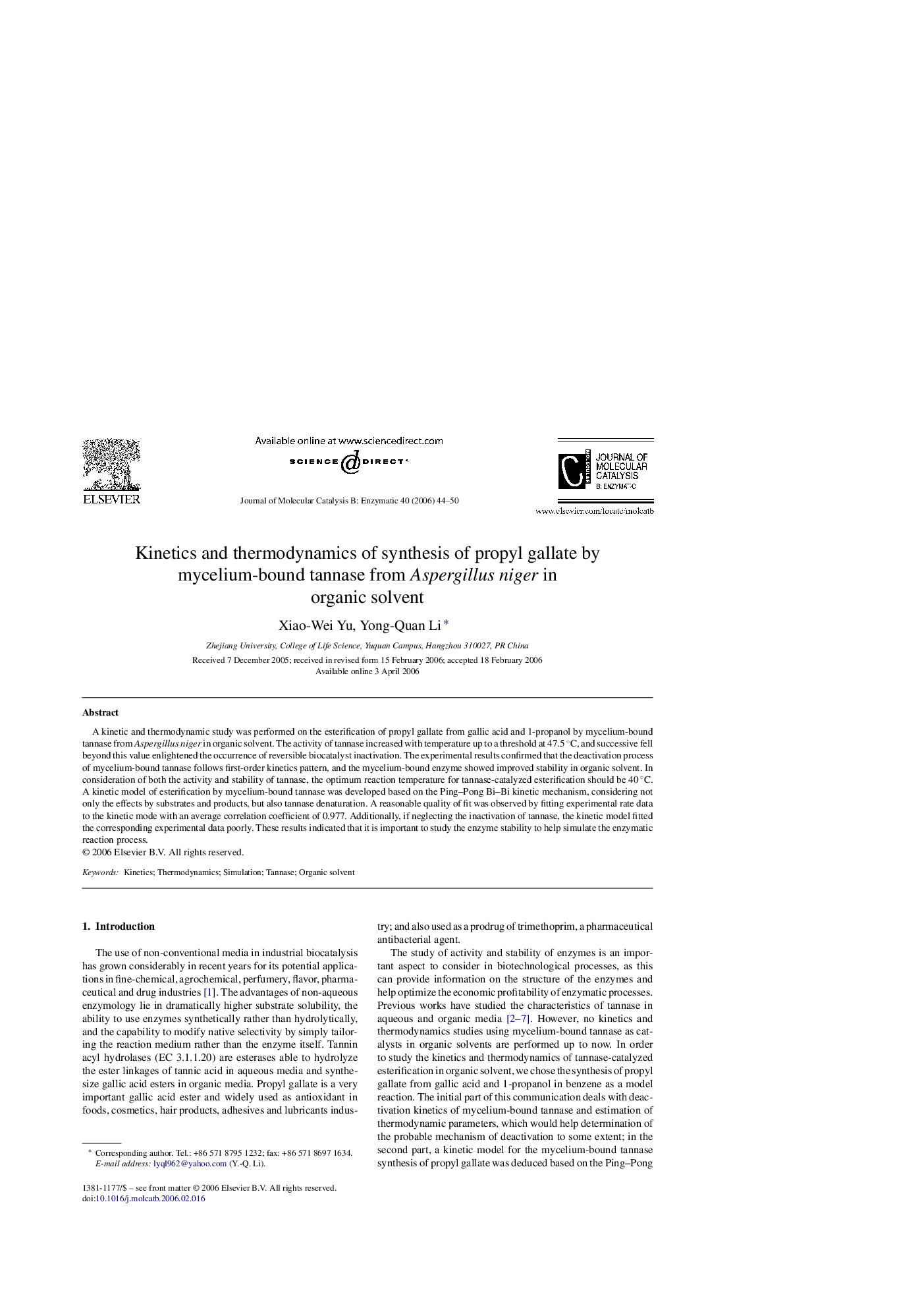| Article ID | Journal | Published Year | Pages | File Type |
|---|---|---|---|---|
| 71300 | Journal of Molecular Catalysis B: Enzymatic | 2006 | 7 Pages |
A kinetic and thermodynamic study was performed on the esterification of propyl gallate from gallic acid and 1-propanol by mycelium-bound tannase from Aspergillus niger in organic solvent. The activity of tannase increased with temperature up to a threshold at 47.5 °C, and successive fell beyond this value enlightened the occurrence of reversible biocatalyst inactivation. The experimental results confirmed that the deactivation process of mycelium-bound tannase follows first-order kinetics pattern, and the mycelium-bound enzyme showed improved stability in organic solvent. In consideration of both the activity and stability of tannase, the optimum reaction temperature for tannase-catalyzed esterification should be 40 °C. A kinetic model of esterification by mycelium-bound tannase was developed based on the Ping–Pong Bi–Bi kinetic mechanism, considering not only the effects by substrates and products, but also tannase denaturation. A reasonable quality of fit was observed by fitting experimental rate data to the kinetic mode with an average correlation coefficient of 0.977. Additionally, if neglecting the inactivation of tannase, the kinetic model fitted the corresponding experimental data poorly. These results indicated that it is important to study the enzyme stability to help simulate the enzymatic reaction process.
